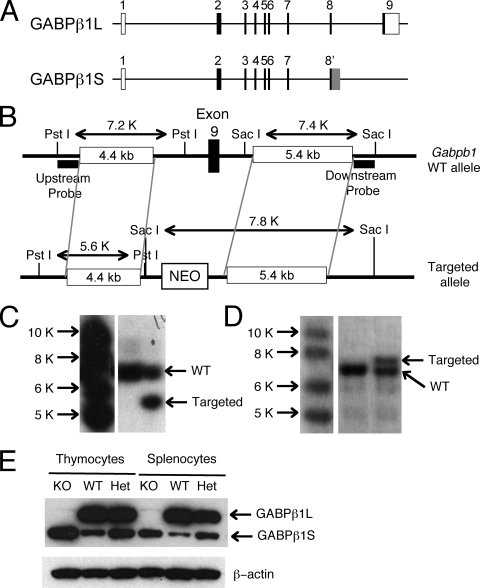FIG. 1.
Generation of GABPβ1L-deficient mice. (A) Gabpb1 gene structure and different exon usages in two GABPβ isoforms by alternative splicing. The Gabpb1 gene contains nine exons based on data available at the UCSC Genome Bioinformatics website (http://genome.ucsc.edu). When the transcript from the Gabpb1 gene is spliced to generate the short GABPβ1S isotype, exon 9 is not used, but additional sequences downstream of exon 8 (gray box in exon 8′) are used instead. The sizes of exons are not drawn to scale. Open rectangles, noncoding exons; filled rectangles, coding sequences. (B) Schematic view of the targeting strategy. In the targeted allele, exon 9 was replaced with a neomycin (NEO) cassette. Key restriction enzyme sites and probes used in Southern blotting are indicated. (C) Identification of ES cells with correct homologous recombination. Genomic DNA was extracted from ES cells that were electroporated with the targeting construct, digested with PstI, and probed with an upstream probe by Southern blotting. (D) Identification of germ line-transmitted offspring. Chimeric mice resulting from blastocyst injection of ES cells were bred to C57BL/6 mice for germ line transmission. Genomic DNA was extracted from the tail samples of the progenies, digested with SacI, and probed with a downstream probe by Southern blotting. (E) Absence of GABPβ1L expression in knockout (KO) mice. Total cell lysates were isolated from thymocytes and splenocytes of the indicated genotypes and Western blotted with an antiserum recognizing both long and short forms of GABPβ1. β-Actin was detected as an equal loading control. Het, heterozygote.

